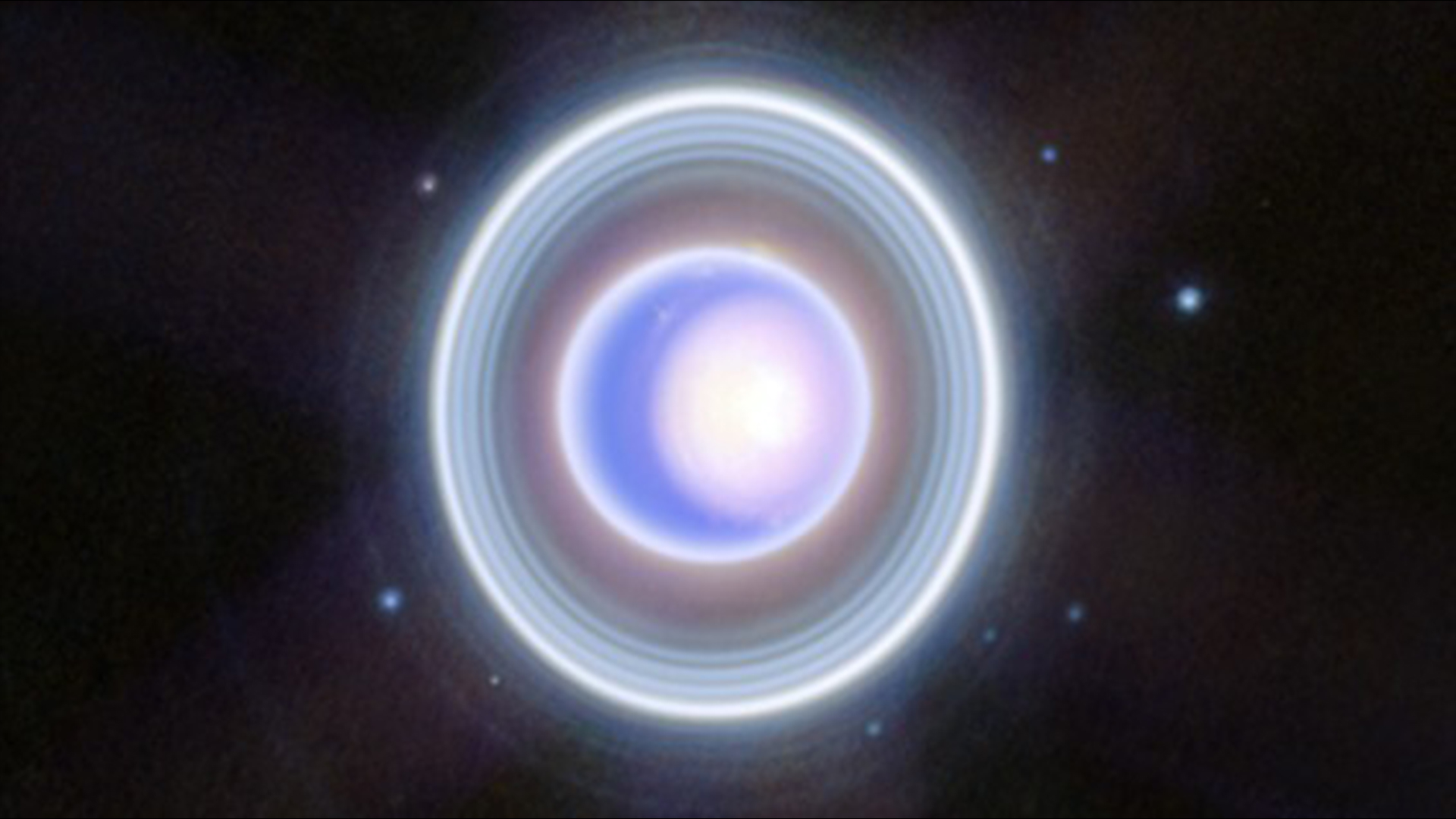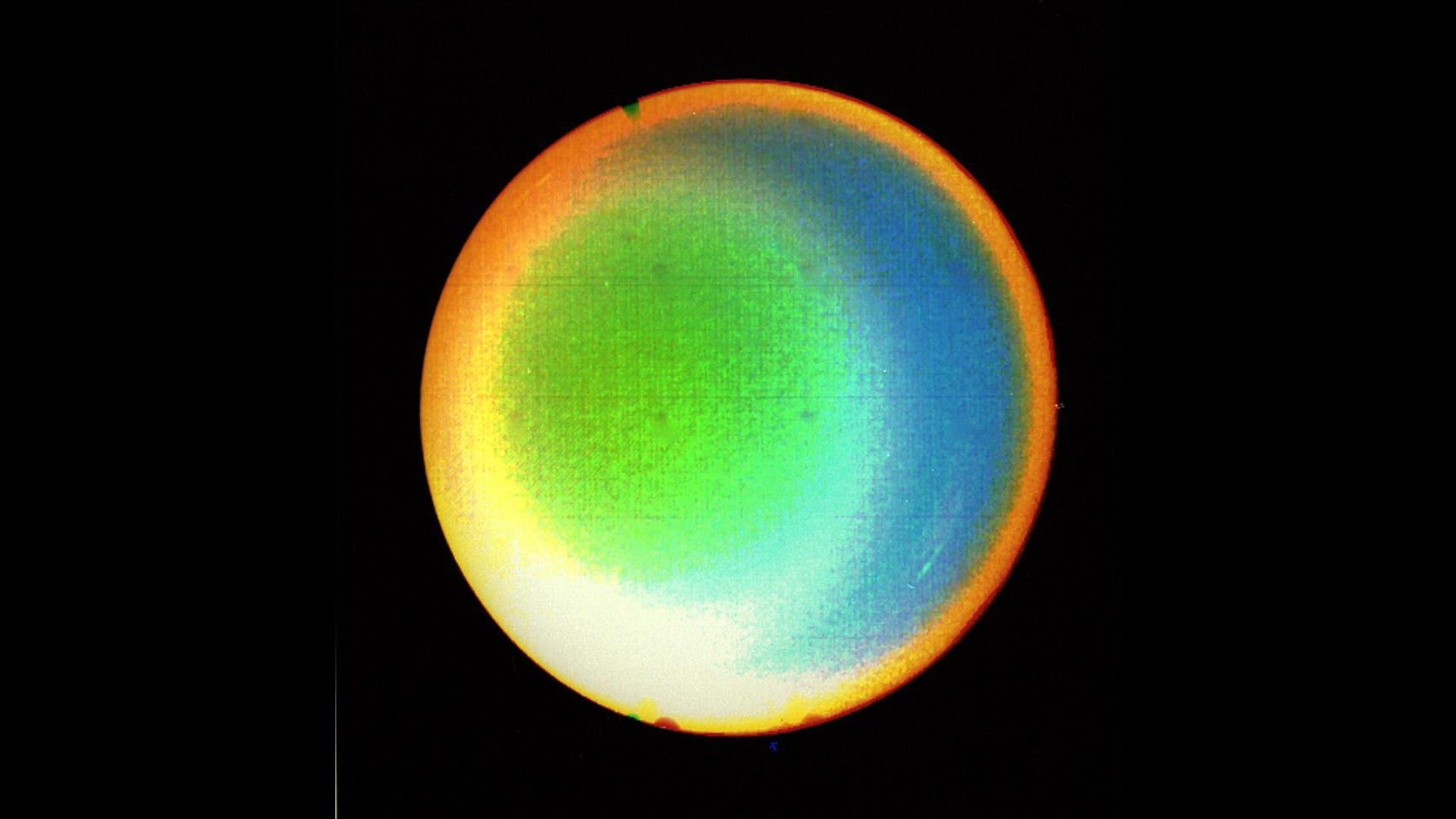Uranus and Neptune aren't made of what we thought, new study hints
A study suggests the ice giants Uranus and Neptune aren't quite as watery as previously thought. They may also contain huge amounts of frozen methane, potentially solving the puzzle of how they formed.

Astronomers have long believed that the ice giants Uranus and Neptune are rich in frozen water. However, a new study suggests they may also have tons of methane ice.
The findings could help solve a puzzle about how these icy worlds formed.
Much about Uranus and Neptune remains unknown. These ice giant worlds have had just a single spacecraft visitor, Voyager 2, which flew past them in the 1980s. As a result, scientists have only a hazy idea of the ice giants' compositions — for example, that they contain significant amounts of oxygen, carbon and hydrogen.
To learn more about what Uranus and Neptune are made of, astronomers have devised models that match the physical properties that Voyager 2 and Earth-based telescopes have measured. Many models assume the planets have a thin hydrogen and helium envelope; an underlying layer of compressed, superionic water and ammonia; and a central rocky core. (The water is what gives them their "ice giant" tag.) Some estimates suggest Uranus and Neptune may each have 50,000 times the quantity of water in Earth's oceans.
But the authors of the new study say these models ignore the way the ice giants formed. As Uranus and Neptune coalesced from the dust cloud surrounding the young sun, they gobbled up, or accreted, objects called planetesimals. The team says these planetesimals resemble present-day comets such as 67P/Churyumov-Gerasimenko, which originate in the Kuiper Belt, the doughnut-shaped region of icy bodies beyond the orbit of Neptune.
Related: Where does the solar system end?
Unlike the supposedly water-rich ice giants, though, a large fraction of these planetesimal-like objects are rich in carbon. So "how is it possible to form an icy giant from ice-poor building blocks?" said Uri Malamud, the study's lead author and a planetary scientist at Technion – Israel Institute of Technology.
Get the world’s most fascinating discoveries delivered straight to your inbox.
To resolve this apparent paradox, Malamud and his co-authors built hundreds of thousands of models of Uranus' and Neptune's interiors. The algorithm they used "starts matching a suitable composition for the surface of the planet, and it gradually works its way deeper into the central point of the planet." They considered several chemicals, including iron, water and methane, the main component of natural gas. Then, they tried to determine which model most resembled the actual ice giants in traits such as radius and mass.
Of the various models they built, the astronomers found that those with methane fit their criteria, with the methane — either in solid chunks or, given the pressure, in a mushy state — forming a thick layer between the hydrogen-helium envelope and the water layer. In some models, methane accounted for 10% of the planet's mass.
The team published their results, which have not yet been peer-reviewed, to the preprint server arXiv in March.
This methane holds the key to resolving the ice paradox. The ice could have formed when hydrogen in the growing planets chemically reacted with the carbon in the planetesimals the planets accreted, the researchers said. Such reactions happen under high temperatures and superhigh pressures — millions of times the air pressure we experience on Earth. These are the exact conditions scientists think existed in the developing planets.
The findings could provide greater insight into these little-understood planets, although verifying if they are actually rich in methane would be challenging, Malamud said. That would be a goal for one of several proposed missions from NASA and other space agencies that aim to explore Uranus.

Deepa Jain is a freelance science writer from Bengaluru, India. Her educational background consists of a master's degree in biology from the Indian Institute of Science, Bengaluru, and an almost-completed bachelor's degree in archaeology from the University of Leicester, UK. She enjoys writing about astronomy, the natural world and archaeology.
 Live Science Plus
Live Science Plus






